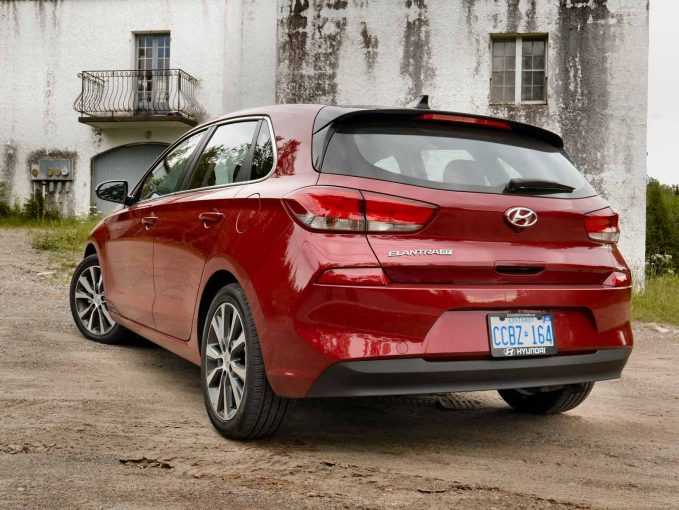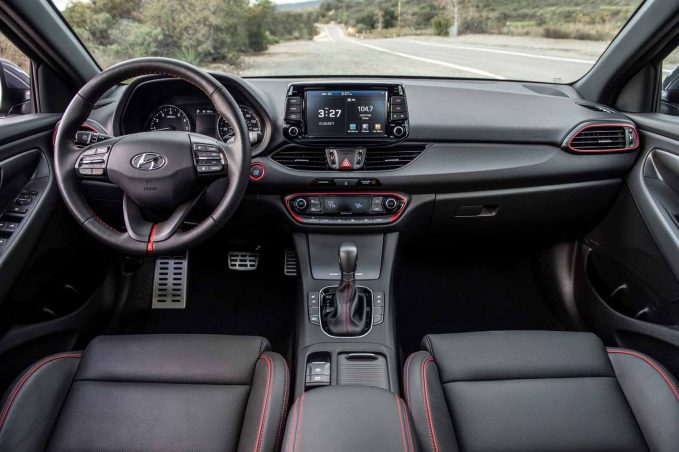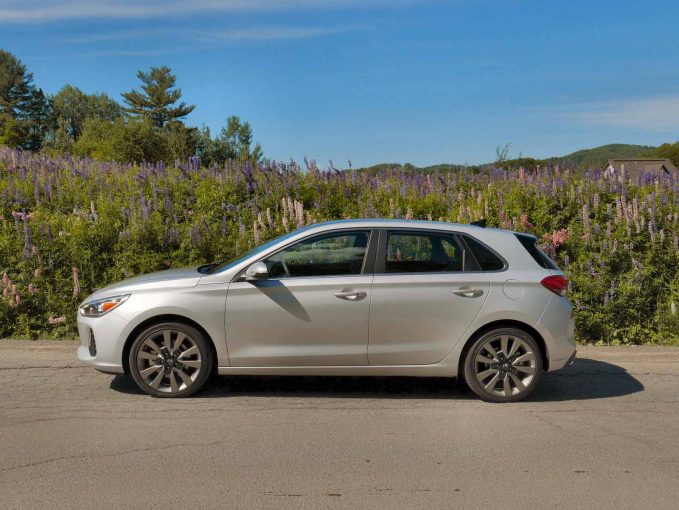Good cars only matter if people are paying attention.
With the general public so distracted by crossovers, compacts of every description are rapidly dropping below the radar. Nowhere is this truer than with the humble hatchback, a body style just as practical as the crossovers that have stalled their sales momentum, but one that lacks the now-required tall stance and all-wheel-drive combo of their popular rivals.
Into this maelstrom of auto apathy steps the 2018 Hyundai Elantra GT, a five-door model that shares its name with the Korean brand’s excellent entry-level sedan, despite riding on a completely different platform. You see, the GT is no long-roof Elantra, but rather an import of Hyundai’s Euro-focused i30 hatch, making it more sibling than fraternal twin.
Does this detract at all from what the Elantra GT has to offer? Absolutely not, but it should inform expectations about what kind of driving experience the hatch has to offer, especially when comparing its top-tier Sport trim against that of its sedan counterpart.
Logic and Reason
On paper, everything about the 2018 Hyundai Elantra GT makes sense. Who wouldn’t want to slip behind the wheel of a car that offers just as much cargo space as many compact SUVs (55 cubic feet/1,560 liters with the rear seats folded) with a much smaller footprint and considerable better fuel efficiency (estimated 32 mpg and 7.4 L/100 km combined)? Approached from a purely logical viewpoint, unfettered by the appeals of marketing and the ritual shaming of anyone who lives in a cold weather climate and dares to run a good set of winter tires on a two-wheel drive vehicle, the Elantra GT offers everything a commuter could need at an operating cost far below that of most CUVs.
ALSO SEE: 2017 Mazda3 vs Honda Civic Hatchback
Swap from the left hemisphere to the right and you’ll continue to be rewarded by a driving experience that’s a cut above what any comparably priced crossover can offer. Entry-level versions of the car feature a comfort-focused suspension tune matched with a 2.0-liter four-cylinder engine that produces 162 horsepower and 150 pound-feet of torque, while moving into GT Sport territory stiffens up the chassis and swaps in a turbocharged 1.6-liter four-cylinder mill that’s good for 201 horses and 195 lb-ft of twist. A six-speed automatic gearbox is optional with the 2.0-liter car, while the 1.6-liter benefits from an available seven-speed dual-clutch automated manual (with a six-speed manual standard across the board).
Sort of Spicy
Last year’s Elantra Sport sedan generated more than a little heat among enthusiasts for its winning combination of capable handling and a lively drivetrain, and at first glance, the 2018 Hyundai Elantra GT Sport would seem to offer more of the same, albeit in hatchback form. Once again, however, it’s important to remember that the GT is an Elantra in name only, and given that it was developed for the European market first and then imported to North America with only a few changes, it’s clear within the first few miles that the car’s cornering chops aren’t quite as focused as its those of its Sport sedan counterpart. This is also the case for its 1.6-liter turbo drivetrain, which pulls strong but doesn’t deliver the pop-and-burble thrills found in the sedan as a result of the latter’s more aggressive tuning.
This is not to say that the Elantra GT Sport isn’t a worthwhile upgrade over the 2.0-liter model, especially if you crave the gutsier acceleration of its turbocharged engine. Still, what was most noticeable in driving the two cars back to back on the same twisting back roads in Quebec’s Laurentians was better body control (thanks to the presence of a rear sway bar) at the expense of a somewhat harsher ride (with 12 percent stiffer springs up front and 22 percent stiffer coils in the rear). The Sport also benefits from a true independent rear suspension versus the torsion bar in the regular GT, but I was hard-pressed to find a situation where that detail made a significant difference in handling.
Dress Up, Gear Up
Regardless of trim level, the 2018 Hyundai Elantra GT looks sharp inside and out with its larger honeycomb grille, LED running lights vertically set like fangs into the front bumper, and more muscular rear fascia giving the car an attitude adjustment with this redesign. Inside, you’ll find an eight-inch touchscreen perched on the dash along with the standard array of Hyundai controls pleasantly arranged within easy reach of the driver. Sport models gain red accents, seat stitching, and seatbelts, but both cabins are equally pleasant to spend some time in and reasonably roomy in the rear row as well. The hatchback also features a simpler and stronger structural shell than the previous generation that helps to cut down on road noise intrusion while at speed.
ALSO SEE: 2017 Subaru Impreza Review
The Elantra GT is offered with a surprising range of luxury options, including heated and cooled seats, a heated steering wheel, leather upholstery, dual automatic climate control, and, of course, navigation. Hyundai has also continued its trend of stuffing as much active safety equipment as possible into even its more affordable models, with the Elantra GT boasting the availability of adaptive cruise control, forward collision mitigation with pedestrian detection capability, lane keeping assistance, and automated high beams (blind spot detection is standard). For the Canadian market, the BlueLink telematics system also becomes available in the GT for the first time, bringing with it the ability to perform and check on various vehicle functions remotely via a mobile phone app.
The Verdict: 2018 Hyundai Elantra GT Review
It’s a tired hatchback refrain, but it bears repeating: the 2018 Hyundai Elantra GT’s array of capabilities and comfortable price point (just above $20k in Canada, just below in the U.S., with official confirmation to follow when it goes on sale later this summer) make it an appealing alternative to heavier, thirstier, and less-compelling-to-drive sport-utility vehicles. It also offers a smidgen more cargo space with the rear seats folded than its next-closest competitor. the Honda Civic Hatchback.
And yet, no one seems to care. Compact car sales are sliding across the board, and hatchbacks are being carried along with them. It’s a shame when the market is dictated less by need and more by groupthink, but the SUV tide cares not who or what drowns in its wake. The Elantra GT is a compelling car worthy of a test drive for anyone who needs more space than a sedan can offer – or who wants to swim against the current and park something different in their driveway.
Discuss this article on our Hyundai Forum












